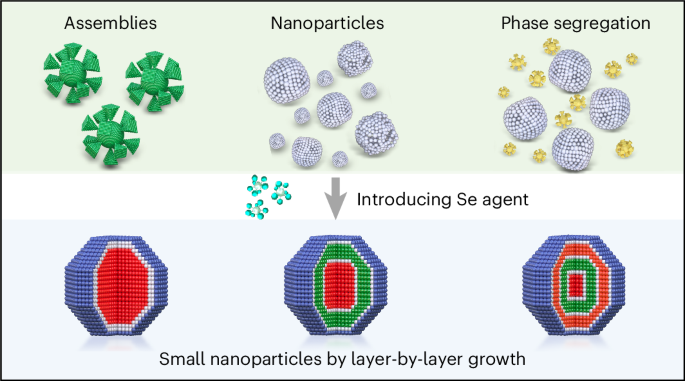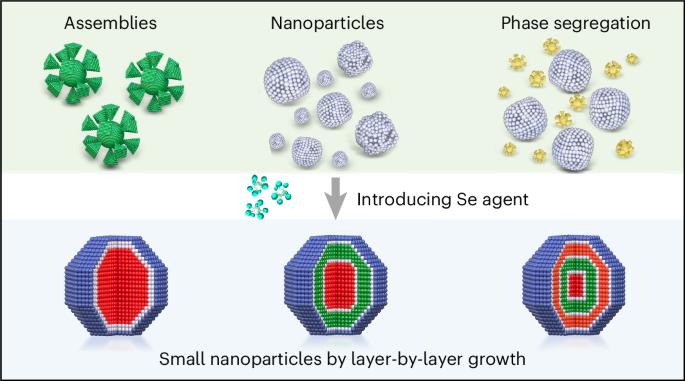A selenium-mediated layer-by-layer synthetic strategy for multilayered multicomponent nanocrystals
0 CHEMISTRY, MULTIDISCIPLINARY
引用次数: 0
Abstract
Ordered heterostructured nanocrystals with large compositional and morphological diversity are important for many applications. However, design of multicomponent nanostructures at the atomic level is difficult due to the elusive nucleation and growth processes in a solution-phase environment. Here we report a modular synthetic protocol that produces ordered multilayered nanostructures with small particle size by layer-by-layer growth. We introduce a selenium capping agent to hinder self-assembly, aggregation and phase segregation of nanostructures, while also sequencing the priority of metal atoms that migrate in the substrate lattice according to different metal–selenium bonding strengths, leading to a layer-by-layer growth for ordered nanostructures. The multilayered multicomponent nanocrystals are demonstrated in an alkaline polymer electrolyte fuel cell by using PtRuZn-SKE (SKE, selenium-mediated Kirkendall effect) as the anodic hydrogen oxidation reaction catalyst, which can deliver a high peak power density of 1.52 W cm−2 in H2–O2 and 1.12 W cm−2 in H2–air (CO2-free) while operating at 600 mA cm−2 for 100 h. This generalizable strategy provides a predictable synthetic pathway to complex nanocrystals. A modular synthetic procedure is reported in which a selenium capping agent hinders phase segregation and aggregation while sequencing the priority of metals that migrate into the substrate lattice, leading to a layer-by-layer growth of ordered nanostructures.


硒介导的多层多组分纳米晶体逐层合成策略
具有大量成分和形态多样性的有序异质结构纳米晶体对许多应用都非常重要。然而,由于溶液相环境中难以捉摸的成核和生长过程,在原子水平上设计多组分纳米结构十分困难。在这里,我们报告了一种模块化合成方案,它能通过逐层生长产生小粒径的有序多层纳米结构。我们引入了一种硒封端剂,以阻碍纳米结构的自组装、聚集和相分离,同时还根据不同的金属硒键合强度对基底晶格中迁移的金属原子的优先级进行排序,从而实现有序纳米结构的逐层生长。通过使用 PtRuZn-SKE(SKE,硒介导的柯肯达尔效应)作为阳极氢氧化反应催化剂,在碱性聚合物电解质燃料电池中演示了多层多组分纳米晶体,该电池在 600 mA cm-2 下工作 100 小时,在 H2-O2 和 H2-air (无 CO2)中可提供 1.52 W cm-2 的高峰值功率密度。
本文章由计算机程序翻译,如有差异,请以英文原文为准。
求助全文
约1分钟内获得全文
求助全文

 求助内容:
求助内容: 应助结果提醒方式:
应助结果提醒方式:


